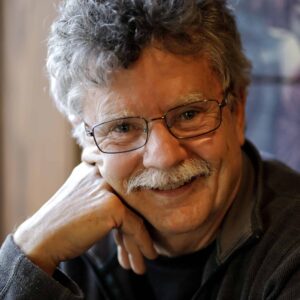To express spontaneously—that is, without a goal—is to practice presence, bringing our full selves to the painting with curiosity and interest.
Artists are often considered to be the delicate barometers of civilization, sensing the deeper pulse of tides less visible to the unaccustomed eye. They can also be chroniclers of a living past not found in state-approved history books, invoking universal themes and values that transcend the individual point of view. Or art can be a personal affair, expressing the worldview of the artist as a means to provoke, initiating discussion or dissent.
Sensing is presence
What’s not generally recognized in art is that the act of expression can be a powerful vehicle for presence. Spontaneous creation is a gesture in which we reach inside to perceive directly what we feel at any given moment and then act from what we see. We inhabit our experience by presenting our full surface area to our inner reality without preconception. This may contain emotion, but it is not emotion. It may include a somatic awareness, but it is not a physical feeling per se. And it is definitely not a thought, although thought can describe it.
If I were to ask you right now:
How are you feeling overall, in the most general sense?
What happens?
If you really look, you might notice something you could name — heaviness, perhaps — or a sadness, or a feeling of freedom or excitement. Or maybe a headache, or a feeling of being sharp or dull, happy or worried. These are all words that describe something that occurred before words. But what happened before the words? There was simply a sensing. That sensing is presence. The content of that sensing comes afterward.
Pure expression is presence
The pure act of expression is a practice of presence. The constant question behind the expressive act is, “What’s next?” It’s an ongoing inquiry into what’s arising in each moment. To express spontaneously — that is, without a goal — is to practice presence, bringing our full selves to the painting with curiosity and interest.
Sometimes I say that “painting is just an excuse to hang out with yourself.” It provides a vehicle in which our presence can unfold and reveal the tremendous intelligence available to us when freed from bias for a particular outcome. Nothing arises by chance, each detail of our inner experience is part of a larger flow and has a direction in which it will lead us deeper. The images that arise are an invitation to journeys waiting just outside our door. Fantasies too easily dismissed as superficial or trite are whisperings from the soul asking to be given a voice.
I realized early on the paradox in using art as a vehicle for self-exploration. As much as the creative process is spoken about with adulation in almost every field of human endeavor, it ultimately boils down to the culmination of that process. The result produced is what finally counts in the end. The product defines and justifies the action. This seems to be taken for granted and remains mostly unquestioned in art. To do anything for something other than the result is after all a waste of time and anathema to the god of progress. To take the medium of painting — which is so strikingly visual — and say that what really counts is the journey itself, not the destination, is a radical experience of presence.
This article was first posted on processarts.com, and is reposted with the permission of the author.




